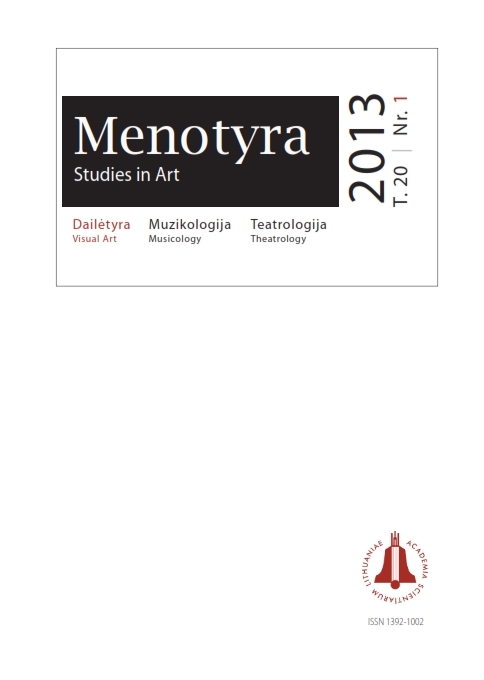Lietuviškas kryžius išeivijoje JAV: memorialinis paminklas,
interjero atributas, dekoro elementas
Lithuanian Cross in the USA emigration: memorial monument, interior attribute and décor element
Author(s): Skaidrė UrbonienėSubject(s): Cultural history, Architecture, Visual Arts
Published by: Lietuvos mokslų akademijos leidykla
Keywords: cross-crafting; Lithuanian cross; roof-pillar; pillared chapel; diaspora; Lithuanian identity
Summary/Abstract: Emigrants that were isolated from their homeland and felt responsible for the preservation of their national identity and glorification of Lithuania’s name in the world were in the search for various forms of nationality manifestation. One of such manifestations were crosses - symbolic objects that already from the early 20th century helped to reveal the peculiarities of Lithuanian culture as well as cataclysms of the state’s history. The ornate cross which in the interwar Lithuania became a symbol of national identity sustained its status in emigration. These Lithuanian symbols - crosses - in private and public spaces reminded of the once abandoned homeland, supported the aspirations and expectations with regard to the freedom of homeland. Such Lithuanian objects in a foreign country as if symbolically united the lost homeland with the present place of residence and helped to adapt in a new environment.Two types of monuments were best suited to expressing Lithuanianness - a cross and a roof-pillar which could be richly decorated with ornaments typical of Lithuanian folk art and understandable as national. Emigrant masters abundantly used geometric and floral motifs for decoration of crosses. A tulip motif was especially loved and declared as the main Lithuanian folk art motif. Some artists used other elements resembling Lithuanian national identity: amber, traditional textile patterns. The idea for the hope of freedom of the Lithuanian State and relationship with re-independent Lithuania reinforced depicting symbols of statehood (Coat of Arms of Lithuania, Gediminas’ Columns, Vytis’ Cross) in these objects.To express the iconographic program of the declaration of Lithuanian identity, some specific sculpture stories and plots were used. The dominant religious stories were related to the symbol of suffering Lithuania (Pensive Christ, Pieta), aspiration to sustain one’s national identity (Pensive Christ) and religious identity (St. Mary of the Gate of Dawn, St. Mary of Šiluva and St. Casimir). It is noteworthy that the American-Lithuanian wood carvers supplemented the array of plots with portraits of famous Lithuanians (including Bishop M. Valančius and Lithuanian rulers Vytautas and Mindaugas) and episodes from history (such as partisans in their struggle for Lithuania’s freedom and exiles in Siberia).
Journal: Menotyra
- Issue Year: 20/2013
- Issue No: 1
- Page Range: 50-66
- Page Count: 17
- Language: Lithuanian

